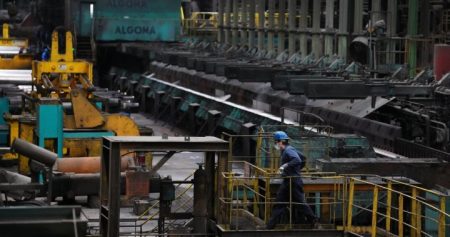India’s foray into the realm of hyperloop technology marks a significant leap forward in transportation innovation, potentially revolutionizing travel within the country and positioning India as a global leader in this cutting-edge field. The successful completion of a 400-meter test track, a collaborative effort between the Indian Railways, IIT Madras’s Avishkar Hyperloop team, and the incubated startup TuTr, signifies the tangible progress being made towards realizing the hyperloop’s immense potential. This initial test track serves as a crucial stepping stone towards larger-scale implementations and paves the way for further testing and refinement of the technology.
The hyperloop system, operating on the principle of magnetic levitation within vacuum-sealed tubes, promises unprecedented speeds of up to 1,100 kph (683 mph), drastically reducing travel times between major cities. The pressurized pods, designed to carry up to 28 passengers, represent a futuristic mode of transportation, offering a glimpse into a future where long-distance travel is both rapid and efficient. The technology’s potential impact on India’s transportation landscape is immense, with the potential to seamlessly connect distant cities, boost economic activity, and transform the way people live and work.
The Indian government’s commitment to this transformative technology is evident in the two-phased approach planned for its implementation. Following the successful testing phase on the 400-meter track, a more extensive 11.5-kilometer test track will be constructed, allowing for a more comprehensive evaluation of the hyperloop’s capabilities under varied conditions. This second phase will be crucial in demonstrating the system’s reliability, safety, and overall feasibility before scaling up to a 100-kilometer stretch. This phased approach reflects a prudent strategy, ensuring thorough testing and validation before widespread deployment.
The long-term vision for the hyperloop in India is ambitious, with plans to significantly reduce travel time between major urban centers like Mumbai and Pune. Currently, a train journey between these two cities takes over three hours, but the hyperloop corridor envisions shrinking this travel time to under 30 minutes, a remarkable feat that would drastically alter commuting patterns and enhance connectivity. This ambitious project exemplifies the transformative potential of hyperloop technology to reshape urban landscapes and facilitate seamless travel between bustling metropolises.
India’s pursuit of hyperloop technology aligns with a broader global trend towards high-speed rail systems, with countries like China and Japan leading the charge. China’s extensive high-speed rail network, spanning over 25,000 miles, serves as a testament to the transformative power of advanced rail infrastructure. Similarly, Japan’s well-established bullet train system has significantly impacted travel within the country, demonstrating the efficiency and convenience of high-speed rail. India’s entry into this arena positions the country as a key player in the ongoing evolution of high-speed transportation.
While other nations, including the United States, explore high-speed rail options, India’s hyperloop initiative stands out as a truly innovative and forward-thinking endeavor. The potential of this technology to reshape India’s transportation landscape is immense, offering a glimpse into a future where travel is both swift and sustainable. The successful implementation of the hyperloop could not only transform travel within India but also inspire similar projects around the world, ushering in a new era of high-speed transportation. The continued development and testing of this technology will be closely watched by transportation experts and enthusiasts worldwide, as India strives to unlock the full potential of the hyperloop.










